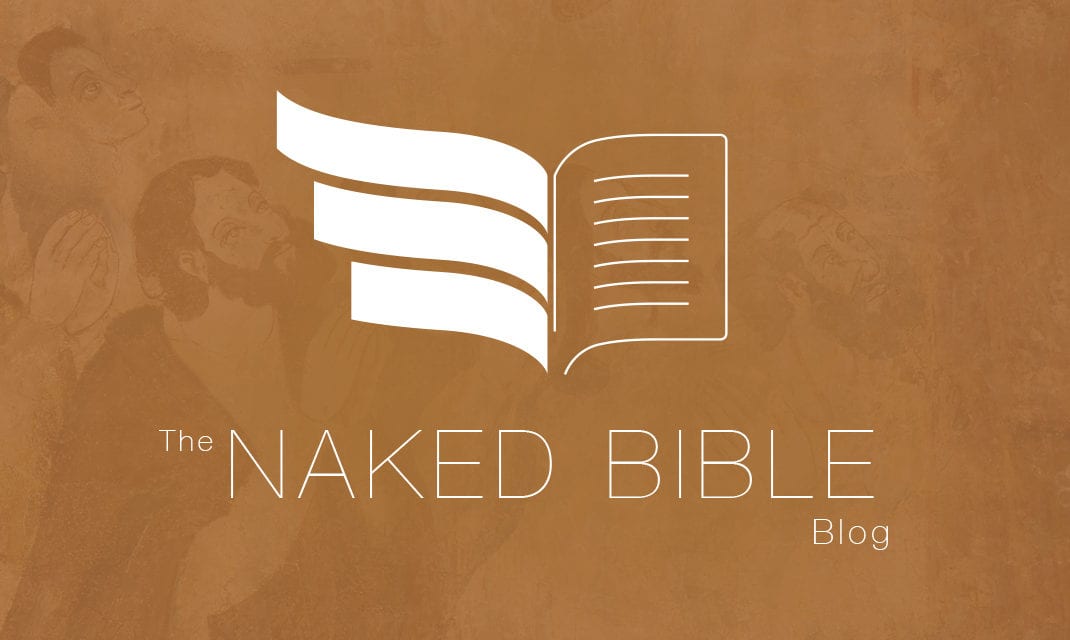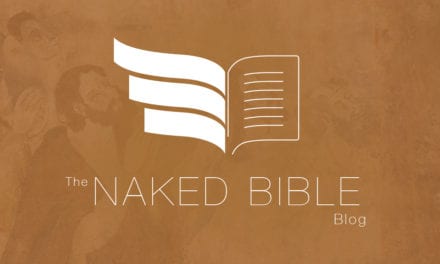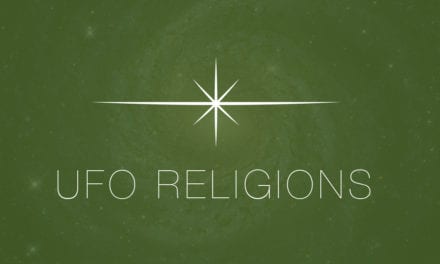I’ve gotten a couple questions recently about the Angel Scroll. It seems a fair number of people out there think it’s real. If that’s you, get ready to be disappointed.
For those who don’t know what I’m talking about, over ten years ago (probably closer to fifteen as I was still in grad school) I saw an article in the Jerusalem Post about a new ancient scroll — termed the Angel Scroll. The article gave a brief description of an alleged scroll of unknown provenance but which had begun to circulate among a handful of scholars, one of whom was Stephen Pfann. That fall of the same year I went to Orlando for the November academic meetings. I bumped into a friend of mine who was living in Jerusalem. We chatted a bit and he introduced me to the man with him, whom I had never met. It turned out that the man was Stephen Pfann. We hit it off. Stephen was quite genial. I asked him about this alleged Angel Scroll. His answer took me by surprise: “Would you like to see it?” I said sure. He said he’d let me have a look while we listened to a session, so off we went (my apologies to Bruce Waltke here — I didn’t hear a word of your lecture that hour).
We sat down and Stephen opened his briefcase. There amid the candy wrappers, pens, and sundry papers was a hand-drawn transcription of a scroll. He handed it to me. It’s been so long that I don’t quite remember if Stephen said he’d made the drawing from a photo or if he’d been given the drawing in photocopy. At any rate, he explained that the hand drawing was all there was. He’d been shown that much by a couple men who told him they had the actual scroll. They wanted him to have a look and perhaps publish it. (Stephen lives in Israel. His expertise is the Dead Sea Scrolls and epigraphy. His dissertation was on cryptic texts from Qumran). Stephen told me he wasn’t publishing anything until he saw the actual scroll and examined it for authenticity. I sat there and perused the whole thing. I couldn’t read it all at sight, but I could read enough of the content to have my attention caught. There was one specific line that was quite odd and memorable. The scroll was at least in part apocalyptic. Jerusalem was surrounded by “thousands of sun disks.”
I can’t recall at this point (and don’t have the old files) whether I mentioned this scroll (with a slightly altered name) in the original edition of The Facade. I think I did. I know I mentioned this scroll in at least one interview — and was careful to point out that there was no verification for its authenticity. I recall L. A. Marzulli asking me about it over the phone or email (again, I don’t recall which). He said he wanted to include it in one of his novels. I only read his first one, so I don’t know if he actually did that. At any rate, I was again clear that all I saw was a transcription, not the real thing. It could have been entirely made up, and I said so — and always have. (In any event, L. A.’s novels are fiction [!]).
I usually chat with Stephen each year at the meetings. Up until about 3-4 years ago I’d ask for updates on the Angel Scroll. The answer was always the same — the men who had contacted him, and of whom Stephen demanded to see the actual scroll, never produced anything. I say up until 3-4 years ago because the last time I asked Stephen told me he had washed his hands of the whole thing. He had concluded it was all bogus since no evidence (going on ten years) had ever been produced that the scroll from which the transcription he showed me actually existed. Anyone with reasonable artistic talent and a knowledge of Hebrew paleography could draw the transcription he had in his possession and which I saw. That’s how scrolls show up in journals — a photo that usually looks awful (things a couple millennia old tend to not produce great photos) along with a hand drawing done from tracing or a good eye. It’s normal procedure. (Same for how clay tablet inscriptions are hand drawn for easier reading).
So is there an Angel Scroll? No. There is no evidence that such a scroll is real. You’re hearing that from someone who held the transcription, read through it, and has had several conversations with the guy who possesses the transcription (the only one that has ever surfaced). If you or anyone you know or have read is saying this is a real text and assigning any “truth” to it, you shouldn’t. Without someone bringing forth an actual scroll, this text is a fiction. But, unfortunately, people like to believe in things for which no data exist. That isn’t new. It’s just sad that Christians are among the gullible. The whole thing was likely a scam designed to extract some money from a scholar or institution who collected such things. If you don’t think antiquities forgery is a problem, think again.
Vaughn, Andrew G., and Christopher A. Rollston. “The Antiquities Market, Sensationalized Textual Data, and Modern Forgeries.” Near Eastern Archaeology (2005): 61-65.
This puts me in the mood to ask Stephen about the scroll again this year just to see him roll his eyes.






Thank you Mike. Is there a hand drawing in Google images or Bing images that would have leaked that you could recognize?
This is about the only article I saw online that is relevant:
http://www.uhl.ac/en/resources/blog/ben-padiah-angel-scroll
I don’t think Stephen ever scanned and uploaded the transcription. He would be the only reliable source for this. Nice (1999!) summary by him at the link.
Dr. Heiser
Can you recommend any peer reviewed journals on Red Sea crossing evidence (i.e. chariots, chariot wheels)? After searching via google, I am finding and lot of strange and speculative material. Thank you for any advise.
Nothing that “proves” where a crossing was or that produces chariot wheels and such. There simply is no such thing because there have been no excavations for such things. There are almost a half dozen perspectives as to where a crossing may have occurred. There are piles of articles and books on those ideas and the Israelite itinerary (and its problems – cp. Exod 12-14 with Num 33). What’s on the internet is almost all speculative.
Thanks Michael. A speaker at my church referenced “interesting” material on YouTube that could give someone chills. I found what I think he was talking about, but anyone can make, then post a video.
By the way, loved your interview on Dr. Browns, The Line of Fire. You have a great sense of humor, Mike.
Almost done reading The Unseen Realm too. Just wow.
Yes; people need to be directed to my site and the blogs (and the book) for my views in context. Even videos of me on YouTube frequently lack context. Hand someone Unseen Realm and ask them to deal with it if you need to. Have them look at the footnotes. Nothing in there is unique or idiosyncratic to me.
I recommend “Patterns of Evidence: Exodus” by Timothy Mahoney (Copyright 2014; Published Internationally 2015). I have two copies at home. I saw it back in June after I pre-ordered it and received it:
http://www.patternsofevidence.com/en
It’s not about itinerary and other speculative matters. It deals with other, more convincing evidence. It’s a well balanced documentary. I’ve watched two other documentaries in the past where they focus on speculative issues such as itinerary and supposed wheels discovered in the Gulf of Aqaba. But, this one from Mahoney is nothing like it–it’s way more convincing and challenging, nothing without its problems though, but the best documentary to date on the Exodus that I know of.
I take an Aqaba position as well (since I think Sinai was in Midian), despite some of the hokum associated with it (like the pillars of Solomon, e.g.). Haven’t seen this one yet.
I liked Patterns, I also thought it was well balanced and well thought out.
I’ve seen one or two possible holes, however there is so much history within that time frame I’m sure much of the “evidence” has been washed away a very long time ago.
The only one I know that has turned up photos on the Red Sea crossing is Bob Cornuke, and even he hasn’t said (to my knowledge) that it is for sure, because many merchants have been over those waters.
I had suspicions on L.A. Dr Heiser, every time he has shown a skull it was rather small, certainly not the size of a “Nephilim”.
I hadn’t heard of the Angel scroll, although I do believe you made reference in the Facade about it!
I’m looking forward to the third installment, I keep telling my friends and Co workers about the first two!
Yep; I think the Angel scroll was mentioned by another name in an older edition of The Facade. I don’t trust anything Cornuke does. These “artifacts” are unprovenanced and have not been excavated or submitted to peer-review analysis. That’s almost always a sign of something to hide. (And there should be hundreds at least, not one or two).
That is good to know,I haven’t read any of his materials as of yet, I’ve only seen it perusing through biblical archaeology.
I’ll keep that in mind for the future!
Are there any legitimate archaeologists that you would recommend following? I’ve never actually followed an archaeologist online with a biblical mindset. That could be quite rewarding.
The field experts (people who do archaeology FT) don’t often do much online. Bob Cargill is one, but he is not an evangelical (if that’s important). Associates for Biblical Research is an evangelical group that focuses on archaeology.
Dear Dr. Heiser,
I think this scroll is out there. Considering the languages that make up this scroll it appears authentic. I would keep in contact with Stephen Pfann and inquire about any news about this Scroll also The Green Family out of Oklahoma may know about this Scroll they have purchased many ancient writings since 2009.
There is no real Angel Scroll. It’s in one language, not plural. It matters not what language or languages a given artifact has on it. Those can be forged. But this scroll isn’t even at that point — the actual scroll has never been seen. It’s bogus.
Zecharaia Sitchen claimed the “Lament for Ur” showed evidence that the ancient city had been destroyed in a nuclear war. Of course, when one reads a translation of the lament, one finds that those who destroyed it used axes and spears, hardly the weapons one would expect Sitchen’s space-faring, atomic-armed Annunaki would be forced to resort to using. Furthermore, the lament identifies the destroyers of Ur as the Elamites and the Cimacki.
The Elamites are fairly well known. They were an ancient people situated just east of the southern end of the Tigris – Euphrates river valley. They were involved in a series of wars with the Sumerians and Akkadians. However, I hadn’t heard of the Cimacki until reading this translation of the “Lament for Ur.”
The Cimacki are described in another ancient Sumerian text, “Letter from Sin-iddinam to the god Utu about the distress of Larsa,” as a barbaric people living in tents, again, hardly a description of Sitchen’s space-faring Annunaki. However, beyond these documents, I haven’t been able to find out anything about who the Cimacki were. Do you have any information on the Cimacki?
I’ve not heard of the Cimacki. Oddly enough, the term does not show up in searches across my digital library, which has 10K + resources. It also produces ZERO hits on a Google Scholar search.
I have the full text of the Lament for Ur in more than one source. One example: Pritchard, ANET, 455–63, and the term does not appear — curiously, this text in Pritchard’s edited volume ard was translated by the famous Sumerian scholar Samuel Noah Kramer.
I’m wondering if Sitchin just made up the term, or if he’s using an alternate spelling that doesn’t show up in these searches. Both are possible in my mind.